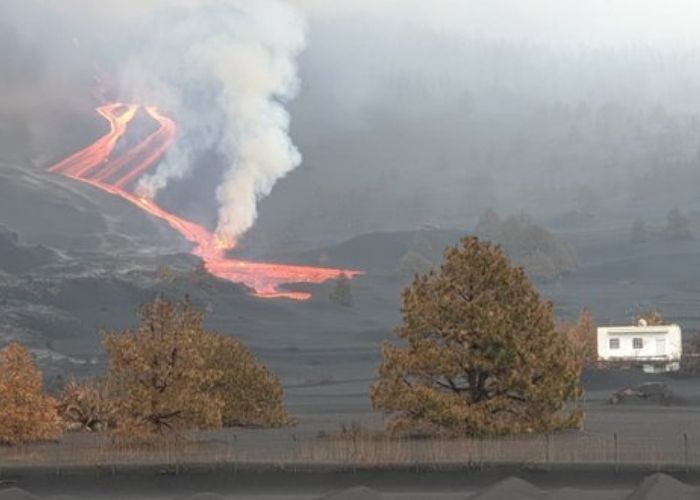LA PALMA – The unnamed crater of volcanic group Cumbre Vieja on La Palma has been active for 68 days now. This almost breaks the record on this volcanic island from the year 1646, when crater San Martín of the Cumbre Vieja was active for 82 days.
There is data on volcanic activity in the Canary Islands for roughly the past 600 years. And around 20 volcanic eruptions have been recorded on the Spanish archipelago during this period. Cumbre Vieja, whose crater erupted on September 19, is the most active: three of the four most recent volcanic eruptions in the Canary Islands involved craters of this group of volcanoes.
‘Hot spot’
Before the current eruption of the unnamed crater, the San Juan crater in 1949 and the El Teneguía crater in 1971 were active for 47 and 24 days, respectively. One of the most widely accepted theories about the origin of the Canary Islands is that this archipelago is located on an African bedrock. This plate slides eastward at a rate comparable to nail growth. 20 million years ago, the plate reached a so-called hotspot; an area where the Earth’s crust is very thin and through which magma could flow through the Earth’s crust. This is how the first islands of Fuerteventura and Lanzarote were created. With 1.8 and 1.2 million years respectively, La Palma and el Hierro are the youngest Canary Islands. Therefore, these two are still above the hotspot and active volcanoes are still present here.
Most Disastrous Volcanic Eruption
The current volcanic eruption on La Palma is in any case the most disastrous in Spanish history. Especially now that experts are not yet able to determine the end of the volcanic activity. So far, lava from the crater has spilled over 1,065 acres of land, destroying nearly 1,100 homes and 400 buildings. Around 7000 inhabitants of La Palma had to be evacuated from their homes because of the lava flow. 500 of them had to use the emergency shelter made available by the Canary Government. It has also had a massive effect on the flora and fauna.
The last volcanic eruption in the Canary Islands dates back to 50 years ago. Then the crater Teneguía erupted in the municipality of Fuencaliente. The first lava came out on October 26, 1971. The eruption lasted a relatively short time, until November 18 of the same year. In fact, it was the shortest volcanic eruption to have occurred in the Canary Islands and the lava flow remained outside the inhabited area. Because this crater is located on the south side of the island, the lava flowed directly into the sea, expanding the surface of La Palma by 2 million square metres.
Volcanic eruptions of the Cumbre Vieja have created so-called lava deltas in the sea: land expansion due to the lava cooled and solidified in the seawater. With the current eruption, the island has expanded by another 5 hectares and the coastline has moved about 350 metres.
Heavy rainfall expected
Currently, the volcanic activity on La Palma is relatively calm. However, more disturbing is the weather forecast forecast for Friday. Sixty litres of precipitation per square metre in twelve hours with a maximum precipitation of 15 litres per hour is expected.


